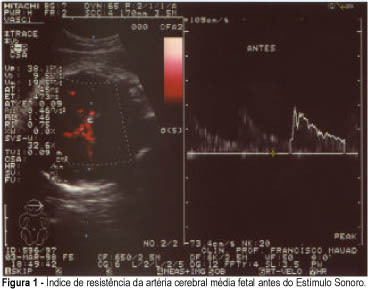Revista Brasileira de Ginecologia e Obstetrícia. 1999;21(3):147-152

Purpose: to determine the possible occurrence of hemodynamic changes in the middle cerebral artery of the fetus (MCA) using color doppler after vibro-acoustic stimulation. Methods: thirty fetuses from pregnant women considered to be clinically normal, with a gestational age of 28 weeks or more were submitted to vibro-acoustic stimulation. We examined the changes in blood flow rate in the middle cerebral artery of the fetus on the basis of resistance index (RI) and fetal heart rate (FHR) by color doppler before and after the sound stimulus. Results: mean FHR before vibro-acoustic stimulation was 142.41 beats per minute (bpm) with a standard deviation of 9.01 and a range of 122 to 162 bpm. After stimulation, mean FHR was 159.44 bpm with a standard deviation of 15.49 and a range of 130 to 187 bpm (p<0.01). Mean RI in the MCA of the fetuses was 75.89% (range: 64 to 91%) before the experiment. After the vibro-acoustic stimulation, mean RI was 66.93% (range: 47 to 83%; p < 0.01). Conclusions: we observed that a sound stimulus provokes the well-known immediate and significant elevation of FHR and a decrease in cerebral vascular resistance when evaluated by the RI of the fetal middle cerebral artery.
Search
Search in:


Comments